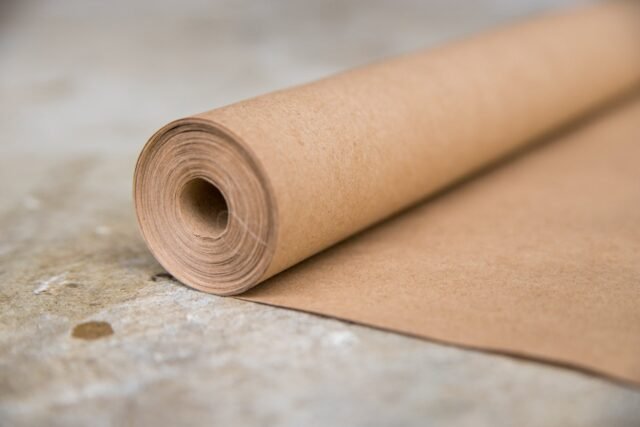Production performance tuning is the key in the business world of packages in the competitive world to preserve profitability and quality. In the case of enterprises that manufacture butcher paper, the optimization of each stage of the production process can help save a lot of money and enhance newer product quality in detail. Regardless of whether you deal with big-scale production or niche customized orders, getting familiar with the peculiarities of production optimization will be a great idea to make your butcher paper suit the demands of the market without any loss or delays. This blog will highlight practical tips on how to have a lean production line and improve the quality of the output, and produce good products efficiently. Let us explore important areas in which optimization can have a grounded effect.
Evaluation of Current Workflow and Analysis of Bottlenecks
To get started with the optimization process, you need a clear idea of your present production flow. Creating a map of all stages of the process (obtaining raw materials, various processing, finishing, and wrapping) will allow the discovery of what blocks the process and slows it down. Is there a repetition in the delay in the cutting of butcher paper rolls? Is the manual inspection too time-consuming? Assessment of these elements enables you to be selective about what should be improved. Increased throughput is obtained through streamlining redundant work or automating where possible, which minimizes downtime. Auditing of the work discharge is essential to maintain productivity improvement over a period.
Using Technology to Achieve Viable Quality and Velocity
The use of sophisticated technology and machinery will transform your production line. Automatic cutters and precision rollers make butcher paper sheets more uniform, thereby because of improper sizing, reducing material waste. This consistency is necessary in the context of those companies engaged in the wholesale custom butcher paper so that different requirements of clients may be met without rework occurring regularly. Moreover, the current control systems measure production speed and quality indicators in real time and enable operators to fix deviations in a short period. The advantages of investing in technology are that, in addition to accelerating production, one also ensures credibility within which your customers can rely.
Putting the Existence of Efficient Material Handling Systems in Place
Raw materials such as rolls of large butcher paper are very important so that continuous production can take place. The incorporation of feeding systems through automation or semi-automated processes eliminates labor, and it can cause damage to the paper. Appropriate storage techniques inhibit the effects of the environment on the paper, which may tamper with quality, e.g., moisture or dust. A well-defined labeling and rotation system of these inventories also avoids overstocking or ageing of the materials. A smooth flow is introduced and made possible by the refinement of material handling so that no unnecessary stops are required to keep the production line moving.
Streamlining the Process of Print and Customization
In this case, consummate incorporation of the printing step into the manufacturing process is very important among those producers who sell printed butcher paper. Timing the print jobs in such a way that it reduces the time needed to set up the machines and coordinating the print run with corresponding orders to the corresponding orders eliminates delays. Printed Butcher Paper solutions with quick changeovers can be used to increase flexibility without slowing down. In addition, frequent repairs of the printing equipment will avoid expensive repairs and stale, inconsistent prints. Such actions assist in finding a sustainable point between customization and throughput.
Training and Empowerment of the Workforce
The strategy of your team is central to the optimization of production. Complete training models of the workers make them familiar with the machine and the need for quality control. Allowing employees to discover waste and propose solutions is the best way to create a culture of constant improvement. Training the employees to do several jobs allows flexibility of the workforce and reduces absenteeism without affecting production. Excellent communication channels also help in the fast solving of prob, thus the production process is very responsive and agile.
Adopting a Sustainable Practice to Lessen Waste
Manufacturing is becoming a topic of sustainability. Costs and environment can be reduced by optimizing the production in order to tailor it to reduce scrap and off-cuts. Such as proper planning in cutting the meat on deli paper leaves fewer unwanted remains of paper. They also improve green credentials with the recycling of paper waste and the implementation of greener raw materials. Environmentally friendly practices are of interest to environmentally friendly customers and fit the age of the industry, which provides a competitive advantage in the market.
Measurement, Monitoring, and Promises of Constant Lesson Learning
The optimization is a process that is undertaken continuously. The creation of such key performance indicators (KPIs) like production speed, the rate of defects, and waste of materials would allow monitoring progress and focus on the areas that require improvement. Frequent checkups of these measures ensure that solutions can be proactive as opposed to corrective measures. The usage of data-driven decisions contributes to long-term changes and scalability. A policy of constant working will make your butcher paper manufacturing remain competitive and a profitable undertaking as the market needs change.
Conclusion
To optimize processes related to the manufacture of custom butcher paper, there is a need to combine technology, efficient processes, talent, and concern for sustainability. Manufacturers can improve the quality of their goods through bottlenecks, au,tomaa tion and culture of improvement to reduce the costs of production and improve the turnover. Be it wholesale butcher paper rolls or special printed sheets, the techniques ensure the contribution of a robust and expandable system in terms of production. To keep on top in this ever-changing industry, constant innovation and details are key, which is what eventually generates business and customer satisfaction.







